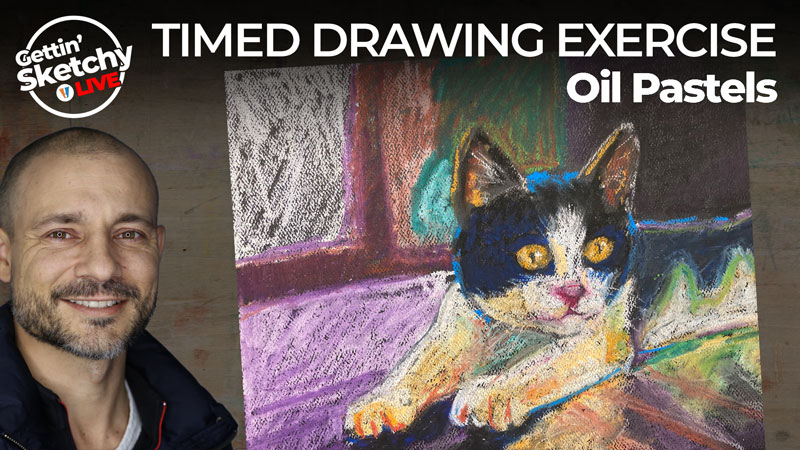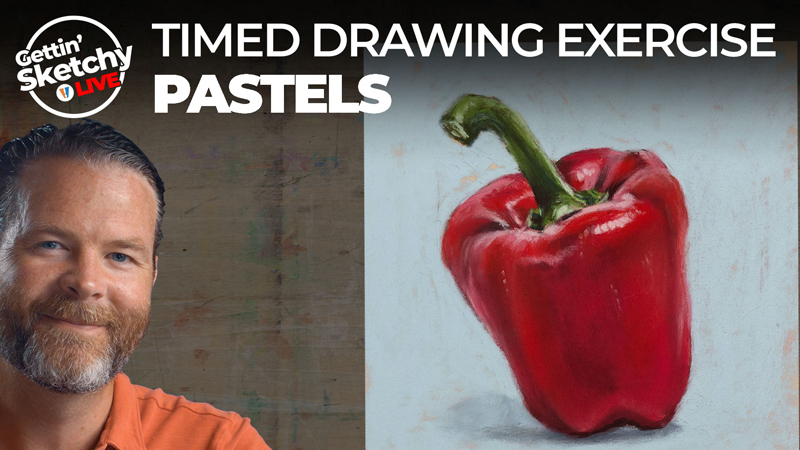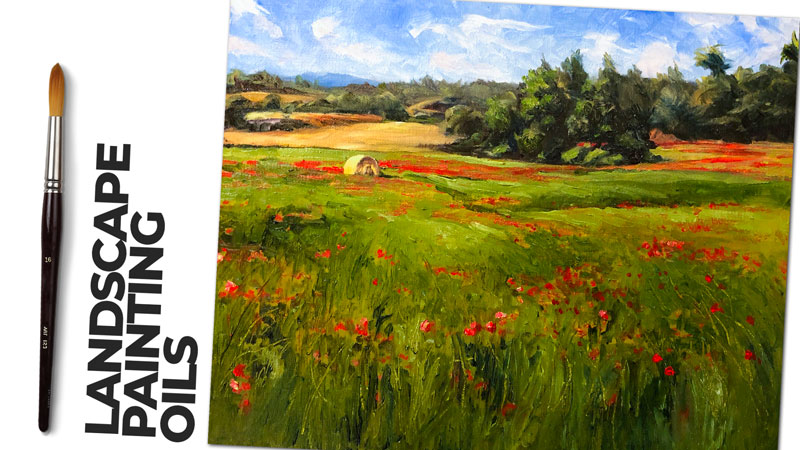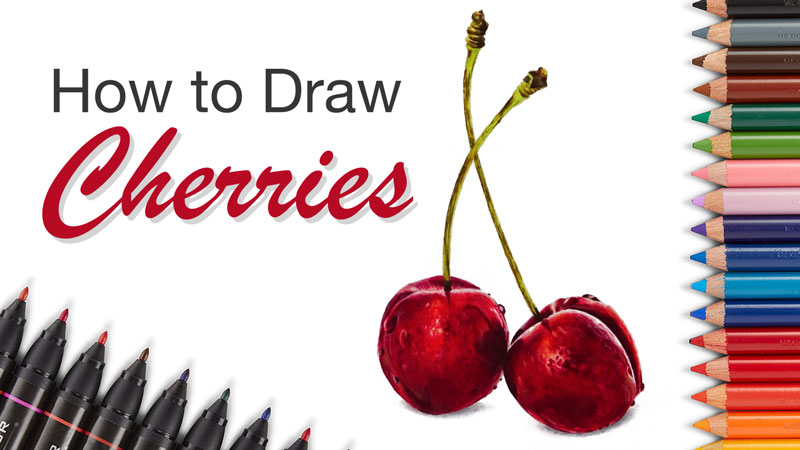Gettin’ Sketchy – Drawing Cherries with Oil Pastels – Season 4 Episode 5
This episode aired live on YouTube on June 30, 2021.
The goal of Gettin’ Sketchy is to create a drawing of a chosen subject with a specific medium within a determined time period. This time period is usually 45 minutes. This amount of time is not enough to create a fully developed drawing, but this isn’t the focus. Instead, our focus is on the challenge involved and the exercise of sketching. Looser and quick sketches still force us to exercise the same “artistic muscles” that we use when we develop a fully rendered drawing. This means that quick sketches help to improve our drawing skills just as much a fully developed drawings.
Gettin’ Sketchy is broadcast live which elevates the challenge. Beyond creating a quick sketch for you live, we obviously include some art instruction as well.
In this episode, the goal is to use oil pastels to produce a drawing of cherries. Due to the time constraint and the looser nature of the medium, an image that resembles an Impressionist painting emerges.
Here’s a look at the completed image…
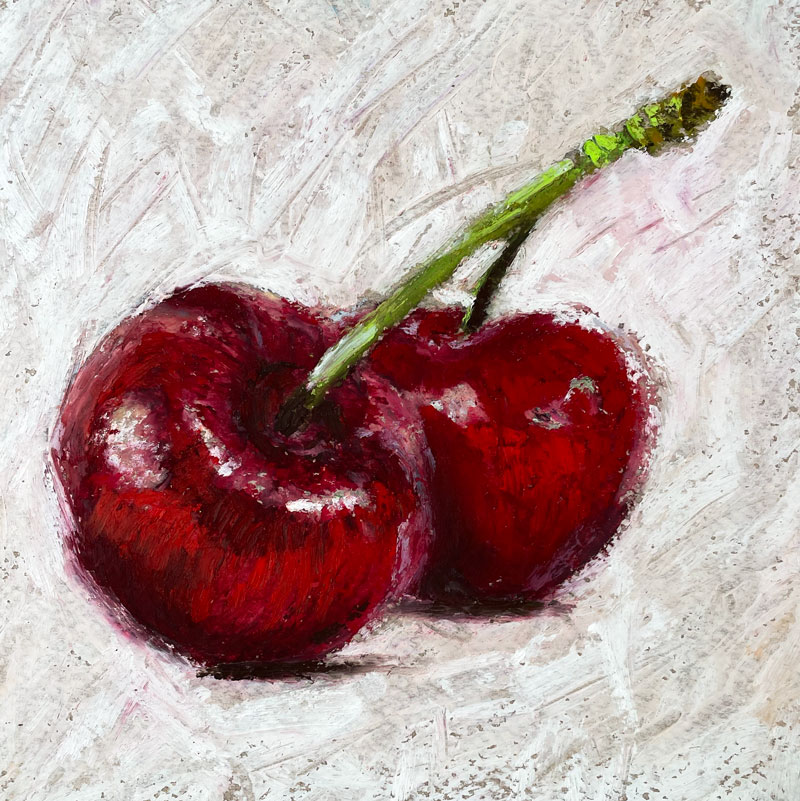
Drawing with Oil Pastel
Oil pastel is an art-making medium that falls somewhere between soft pastels and wax-based crayons. Oil pastels feature an oil-based binder that never fully dries. This means that oil pastels remain workable after the drawing has been completed.
Unlike traditional soft pastels, oil pastels do not produce a dust. This means that oil pastels are slightly less messy, but also more difficult to blend. Oil pastels can still create a mess. As the medium is applied, small pieces of the medium usually fall off. These small pieces can be brushed away using a drafting brush or similar tool.
While a light pencil sketch can used as a starting point with oil pastels, most applications are made directly with the medium. If a graphite drawing is too dark, the oil pastels may mix with the pencil producing an undesired grayish color. Also, lighter colors of oil pastel may not cover pencil underdrawings, resulting in the pencil drawing remaining visible through the oil pastel applications.
Drawing on Toned Surfaces with Oil Pastels
Oil pastels can be applied to almost any surface, however textured surfaces are usually preferred. This is due in part to the importance of layering applications. Once the texture of the paper has been filled with the medium, subsequent applications of oil pastels are difficult to apply and may lift from the surface.
See also: All About Drawing Papers
Many artists prefer to work on toned paper when using oil pastels. A toned surface provides a “starting value”. This allows for more accurate evaluations of value relationships compared to white paper. As an added benefit, some small specks of the paper may show through the oil pastel. This means that the color of the paper influences the finished look of the drawing.
The paper used for this drawing is Canson Mi-Teintes pastel paper. This paper features two distinct textured surfaces – one with a heavy tooth and one with a slightly less heavy tooth.
See also: 6 Reasons to Draw on Toned Paper
Here are a few lessons and lesson series that provide more information on oil pastels and its usage. Some of these lessons require membership…
- Oil Pastel Landscape – Expressive Brushstrokes
- Impressionist Oil Pastel Landscape
- Woodland Landscape with Oil Pastels – Lesson Series (Membership Required)
- Mountain Stream with Oil Pastels – Pastel Landscape Mastery Course (Membership Required)
- Mountainside Landscape with Oil Pastels – Lesson Series (Membership Required)
- Cow with Oil Pastels – Animals with Pastels Course (Membership Required)
Photo Reference
A reference photo was used in this drawing exercise. This image was slightly enhanced in Photoshop. The original image comes from Pixabay.com
Here’s a look at the photo reference…
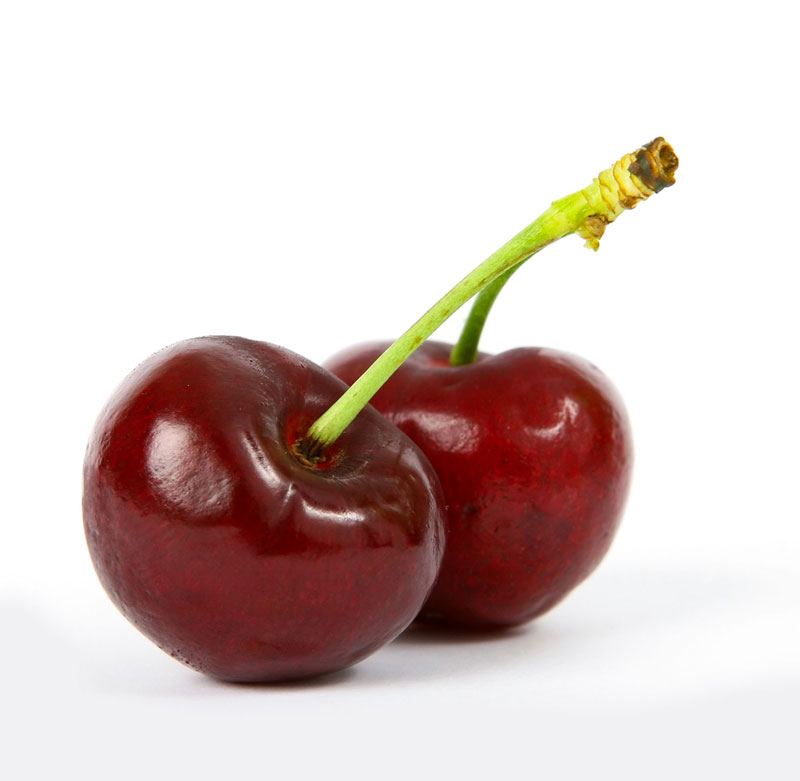
Oil Pastel Brands
As is the case with any art making medium, there is great variety in quality and price with oil pastels. I generally prefer to use two different brands – Cray Pas by Sakura and Sennelier. Cray-Pas oil pastels are harder with less concentrated amounts of pigment. This makes this oil pastel perfect for initial marks and layers.
Sennelier oil pastels are much softer and are best suited for finishing touches such as strong highlights and “pops” of color. Sennelier oil pastels cover like thick oil paint and are loaded with pigment.
Cray-Pas oil pastels are inexpensive while Sennelier oil pastels are quite pricey. Both brands are easily used together.
Here are few links to purchase the materials used in this lesson…(The following links are affiliate links which means I make a small commission of you purchase at no additional cost to you.)
Drawing Cherries with Oil Pastels – Conclusion
The finished drawing has an Impressionistic look due to the looser nature of the medium. In fact, this is one of the reasons I love working with oil pastels. It forces me to be looser and focus on shapes of color and value instead of details. Working with shapes of color and value is fundamental to painting. With oil pastels, we have a medium that is applied as a drawing but is closely related to painting. This medium is great for practicing the concepts of painting without pulling out the brushes.
If so, join over 36,000 others that receive our newsletter with new drawing and painting lessons. Plus, check out three of our course videos and ebooks for free.


